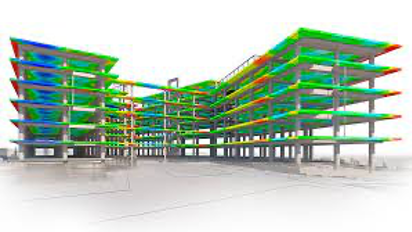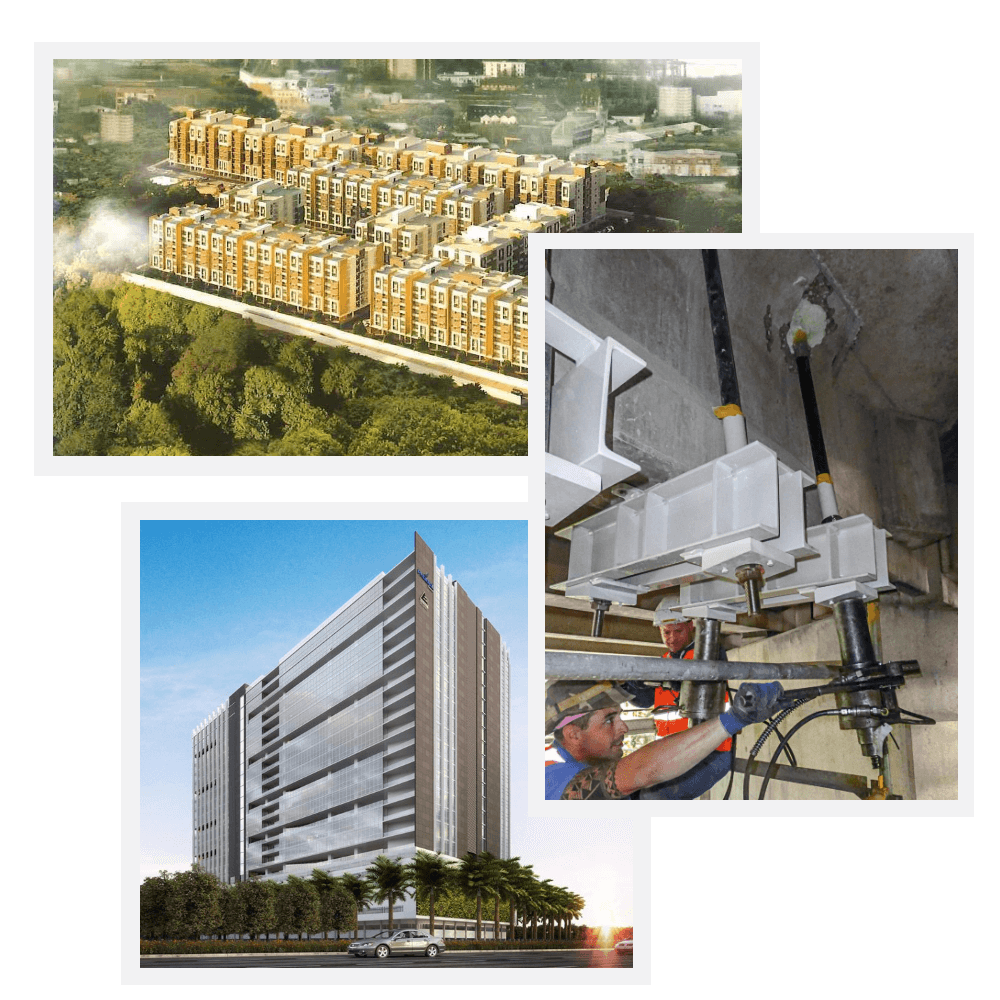
Structural Designs
Structural design is the methodical investigation of the stability, strength and rigidity of structures. The basic objective in structural analysis and design is to produce a structure capable of resisting all applied loads without failure during its intended life. The primary purpose of a structure is to transmit or support loads. If the structure is improperly designed or fabricated, or if the actual applied loads exceed the design specifications, the device will probably fail to perform its intended function, with possible serious consequences. A well-engineered structure greatly minimizes the possibility of costly failures. A structural design project may be divided into three phases, i.e., planning, design, and construction.

Foundation Designs
Foundation design is the creation of a construction plan for a building foundation. It is a highly specialized function and usually requires highly skilled professional involvement. The foundation is the structural base that stands on the ground and supports the rest of the building. Therefore, foundation design must involve extensive study of the ground below the foundation as well as the design and materials used on the foundation itself. Following types of foundation design are designed.
- Shallow Foundations
- Shallow Foundations
- Individual Foundations
- Combined Footings
- Strip Footings
- Raft or Mat Foundations
- Deep Foundations
- Pile Foundations

Value Engineering
Value engineering is the process of finding and using acceptable material and process substitutes that will optimize both the cost and the performance of a structure. At The Engineering Design, when the project is on a tight budget and an even tighter construction schedule, we are skilled at applying Value Engineering and Optimization principles, Early Value Engineering can help increase productivity, reduce the overall budget, and reduce project delays all while increasing the value of the finished product. Every project can benefit from it, but it can be especially beneficial in commercial construction when the functionality of the project takes centre stage.

Re-Engineering
Retrofitting a building involves changing its systems or structure after its initial construction and occupation. This work can improve amenities for the building’s occupants and improve the performance of the building. Retrofitting of RCC structural members is carried out to regain the strength of deteriorated structural concrete elements and to prevent further distress in concrete. Strength deficiency of concrete structural members can be due to poor workmanship, design errors, and deterioration due to the aggression of harmful agents. The retrofitting process shall start with investigation and diagnosis of cracks and then applying suitable retrofitting technique and compatible materials. There are several techniques which are used to retrofit structural members such as section enlargement, external plate bonding, external post-tensioning, grouting, and fibre reinforced polymer composites.

Innovations
Innovation in structural engineering is changing the way the practice gets done. From computer science to robotics and smart materials, structural engineering is changing. Recent innovations in the field are solving some big challenges facing the discipline. Current trends in structural engineering includes improved energy efficiency, modular construction, prefabrication, improved materials for longer lifespan and more efficient construction.

Peer Review
Peer review is the practice of obtaining an independent, unbiased evaluation of the adequacy and application of engineering principles, standards, and judgment from an independent group of professionals having substantial experience in the same field of expertise. Because every project comes with one-of-a-kind challenges, an independent reviewer may use their unique experience to suggest optimal design solutions.

COST ESTIMATION
Estimation is the process of predicting the cost of construction projects by comparing the project to a similar one that has already been completed. Costing is the process of calculating the overall cost of a construction project considering all aspects such as labour, materials, equipment costs, and taxes. At Innotech, we provide the cost estimates at every stage of design, right from concept stage through design development and final Good For Construction quantities.

Civil Engineering
Civil engineering is a professional engineering discipline that deals with the design, construction, and maintenance of the physical and naturally built environment, including public works such as roads, bridges, canals, dams, airports, sewage systems, pipelines, structural components of buildings, and railways. Civil Engineering involves planning, designing, constructing, maintaining, and supervising infrastructures which include facilities essential to modern life like highways, bridges and tunnels, schools, hospitals, airports and other buildings, sewage systems and water treatment facilities.
